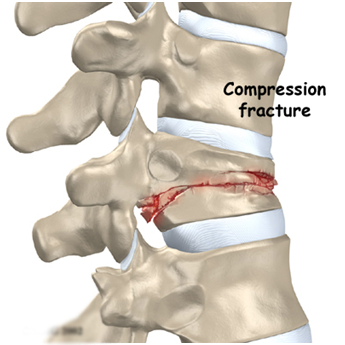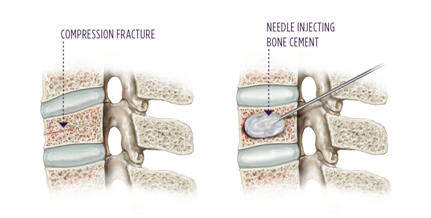| Category | Spinal (Back Pain) |
Spinal bones are called vertebrae. Vertebroplasty is used most often to treat a type of injury called a compression fracture. These injuries are usually caused by osteoporosis, a condition that weakens bone. Osteoporosis is most common in older people.
Vertebroplasty and kyphoplasty are minimally invasive procedures used to treat vertebral compression fractures of the spine. These painful, wedge-shaped fractures can be caused by osteoporosis, injury or cancer. Left untreated, they can lead to a humped spine (kyphosis). By restoring the vertebra height with a balloon and injecting cement into the fractured bone, patients can recover faster and reduce the risk of future fractures.The cement-strengthened vertebra allows you to stand straight, reduces your pain, and prevents further fractures.
Vertebroplasty can relieve the pain caused by compression fractures in the spine.
Weakened spinal bones can crack or break into many pieces. The fractures can occur during activities that wouldn't usually break a bone. Examples include:


Vertebroplasty or kyphoplasty may be a treatment option if you have painful vertebral compression fractures from:
Vertebroplasty involves injecting a type of bone cement into a broken spinal bone. In a similar treatment, called kyphoplasty, a balloon is first inserted into the spinal bone. The balloon is inflated to create more space inside the bone. Then the balloon is deflated and removed before the cement is injected.
The doctor will clean the area over the spine and insert a small needle into the target area under imaging guidance. When it is in the correct position, they will inject cement. They will remove the needle and cover the injection site with a small dressing.
We have very fast and competent working team (Consultant, fellow, clinical assistant, technician and ward assistant) which provide you comfortable atmosphere and ease your nerves. Usual time of stay is around 1day
Every procedure carries a risk, although this is extremely small. The risk of infection with this procedure is extremely small as no incisions are made in the skin.